
Learn how you can implement the alternative healing practice of Shiatsu massage therapy to relieve your chronic physical and emotional conditions.
Read on to find answers to question like:
What is Shiatsu massage?
What are the benefits of Shiatsu massage therapy?
Introduction
Alternative healing practices have undergone a revival in the west.
This is particularly true with Shiatsu massage therapy.
As a massage technique that originated out of traditional Japanese massage tradition called anma, Shiatsu has evolved with the influence of Chinese medicine and Western science.
About an average of 40 million Americans undergo massage therapy in year, according to the American Massage Therapy Association.
The practice of massaging is a quickly growing profession.
Massage therapy was taught to Japanese medical students since the early twentieth century.
The word shiatsu literally means “finger pressure” because of how practitioners use mainly their digits to massage, but thumbs, palms, and even feet can also be used.
Shiatsu massage therapy has components that can be explained by Chinese ideology of qi and uses aspect of Western physical therapy to manipulate the body.
What is Shiatsu Massage?
In detail, Shiatsu massage includes a variety of actions to holistically massage one’s body.
A session lasts an average of 60 minutes.
The client lays prone, or face down, upon a Japanese futon or padded surface on the floor.
The Shiatsu practitioner then works to systemically massage the entire back of the body, targeting every part.
Practitioners target pressure points on the body using fingers and palms.
The body is also manipulated by stretching out limbs and mobilizing joints.
The deep assisted stretch loosens up tension in the musculoskeletal system, similar to that of Western style physiotherapy.
No other instruments are used during a Shiatsu massage session, and the client remains clothed.
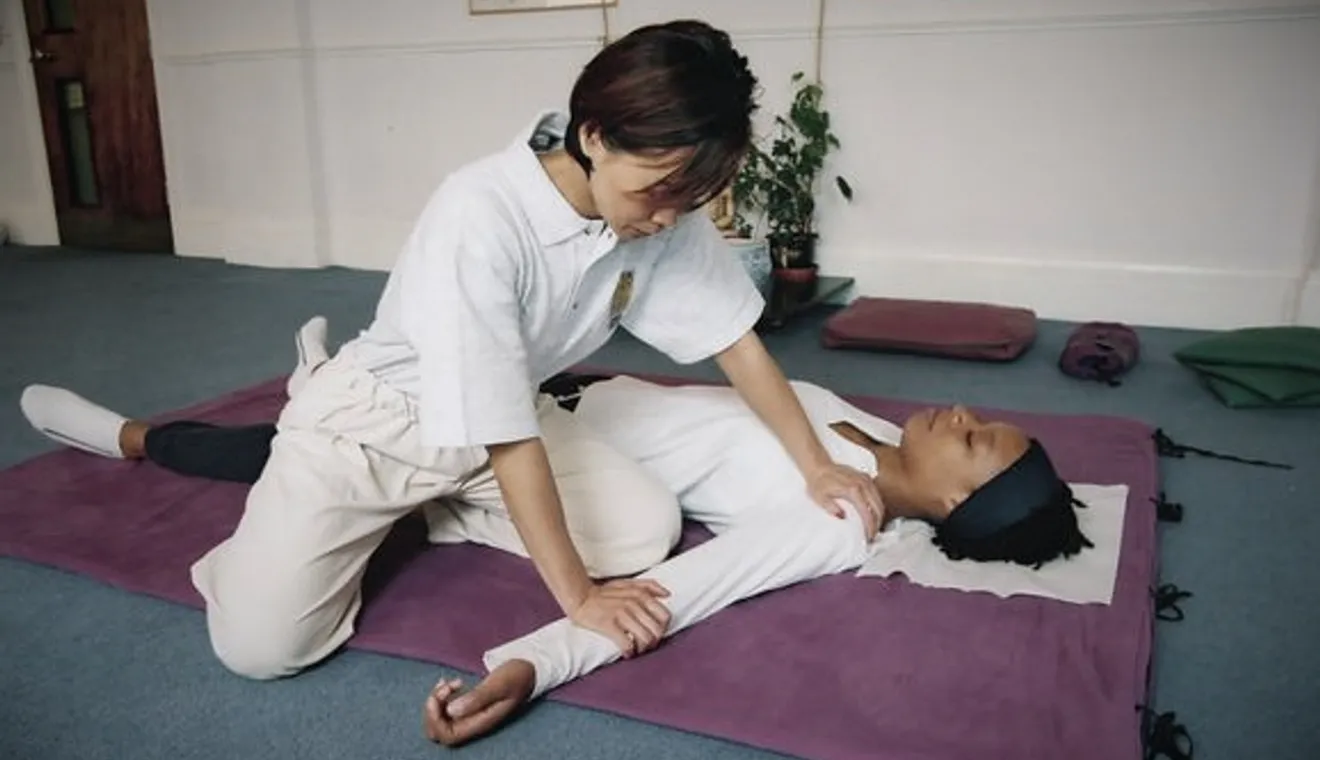
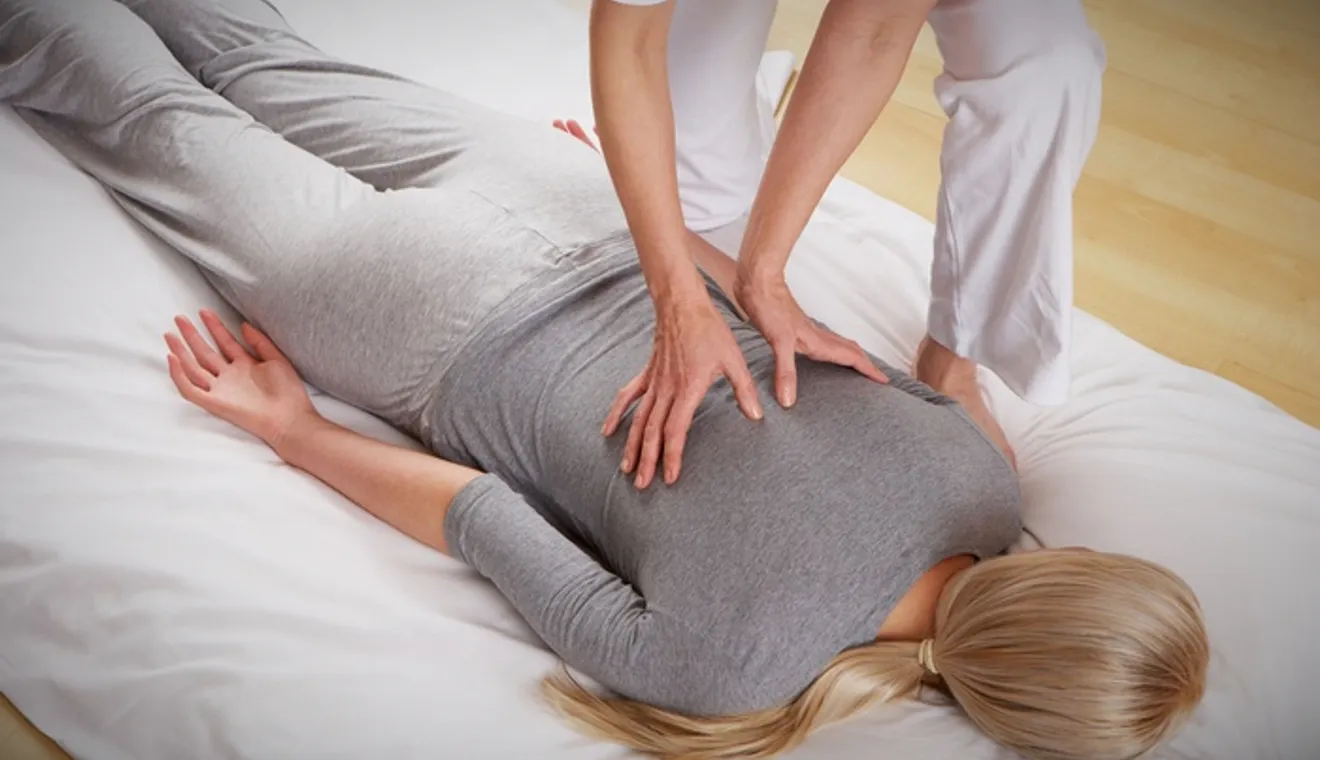
Shiatsu also includes a pre-session diagnosis.
This consists of palpating certain pressure points of the body which with the knowledge of Chinese medicine energy flow, allow the practitioner to understand the underlying problem.
However, no matter where the imbalance of energy resides, the massage encompasses the whole body for holistic healing.
History of Shiatsu Massage
The original tradition of massage therapy in Japan is called anma, which was created by Akashi Kan Ichi in the early 1300s.
Acupuncturists later popularized it in the 17th century.
This massage was known by the way it was performed: a series of pressured kneading of the muscles.
The strokes of the massage focused on directing away from the heart.
In anma tradition, there are several specific techniques of stroking, such as by squeezing or rolling the hand.
The practice of Shiatsu embodied many anma principles when a man named Tokuiro Namikoshi developed it in the 1940s.
Although it did exist before, since there was even a Shiatsu Therapists Association in the 1920s, Namikoshi opened a Shiatsu school which standardized the practice.
It was taught along with Western medical science, which is how many western elements combined with it.
Earlier on, the 6th century brought the introduction of Chinese culture into Japan.
The heavy Chinese influence has become a vital part of Shiatsu.
The method of diagnosing and performing the massage is based on traditional Chinese ideology. The concepts of energy flow, or qi (ki in Japanese), meridians, and pressure points made up the reasoning behind this massage technique.
Shiatsu uses the spiritual intuition of the practitioner to figure out where in the body exists a blockage of energy.
A diagnosis consists of more than just asking where the pain is.
Rather, practitioners focus on the body as a whole.
They ask questions about medical history; they observe how the client looks and how their voice sounds.
They usually palpate the body before beginning the massage to get an idea of the energy blockage.
The client’s pulse is also palpated.
How Does Shiatsu Work?
Shiatsu is meant to work not by healing the body itself.
Rather, it opens up the doors for the body to heal itself.
That’s why it falls under the category of holistic medicine, with the belief that one’s body has much potential to heal.
The role of the practitioner is to trigger this potential.
In this way, it is similar to practices like osteopathy and lymphatic drainage.
Since the belief is that all the systems of the body – nervous, endocrine, digestive – are connected, by massaging the musculoskeletal system, other systems can be affected as well.
According to Chinese tradition, the body has energy, or qi, which is seen as the vital essence of life.
Qi flows through interconnected pathways called meridians.
There are twelve meridians in the body, each signifying a major organ.
There are six meridians on either side of the body.
The energy circulates through the meridians much like blood flow.
However, if there is a blockage, there is an imbalance in energy.
Imbalances in energy flow can be a result of trauma, injury, or stress, which manifest as bodily pain or emotional turmoil.
The 12 Meridians:
-
Lung
-
Large Intestine
-
Stomach
-
Spleen
-
Heart
-
Small Intestine
-
Bladder
-
Kidney
-
Pericardium
-
Triple Warmer
-
Gallbladder
-
Liver
There may be energy concentrated in certain meridians, leaving others lacking.
This imbalance thought to be the cause of negative symptoms.
For example, an imbalance in the Heart Meridian can lead to symptoms of chest pain or emotional problems like depression and anxiety.
There are several different types of energy that flows through each meridian.
Each type is characterized by one of five elements.
The 5 Elements:
-
Water
-
Fire
-
Wood
-
Metal
-
Earth
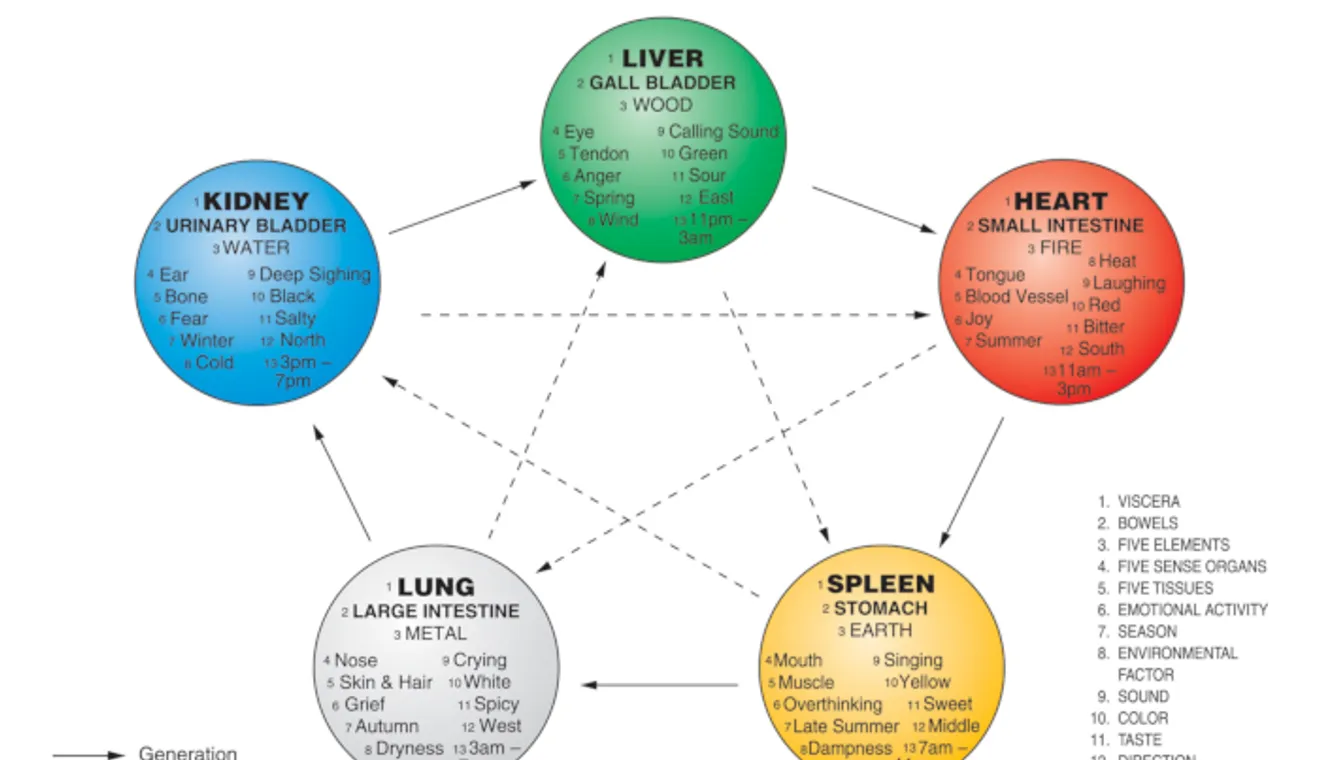
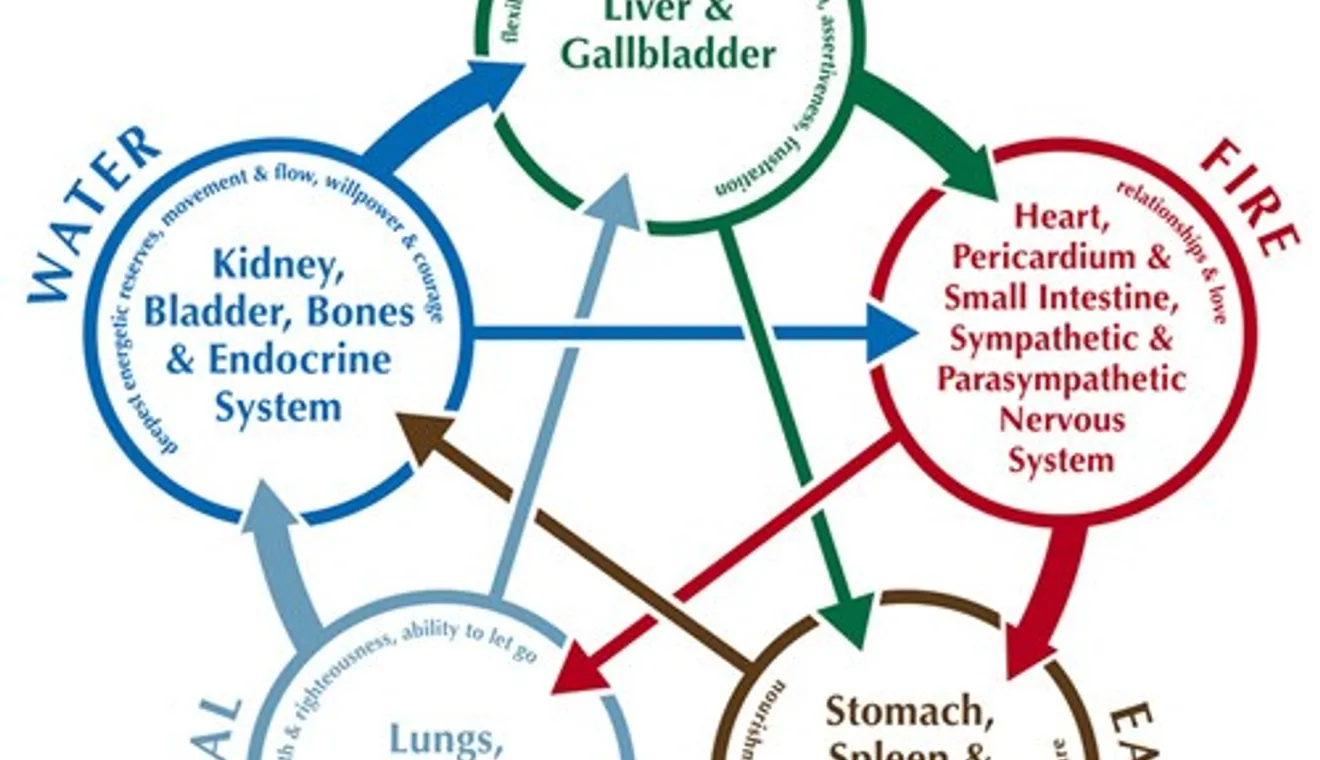
Elements have a lot to do with how symptoms manifest, especially emotionally.
For example, the Heart Meridian is associated with the Fire element, which is the source of passion, rage, and heat.
An imbalance in the fire element can lead to physical problems like fever, inflammation, a sore throat.
Emotionally, it can increase one’s irritability.
Overall, harmony in the body all comes down to a balance of Yin and Yang, an ancient Chinese principle.
The 6 meridian channels on each side are comprised of 3 yin meridians and three yang meridians.
Yin represents feminine energy of water and earth, of passivity and night.
Yang is the opposite, representing masculinity, air and fire, activity and day.
Therefore, energy must be fluid throughout the body – so that all organs and elements can contribute to a balance of yin and yang.
This is the best environment for a strong immune system and healthy well-being.
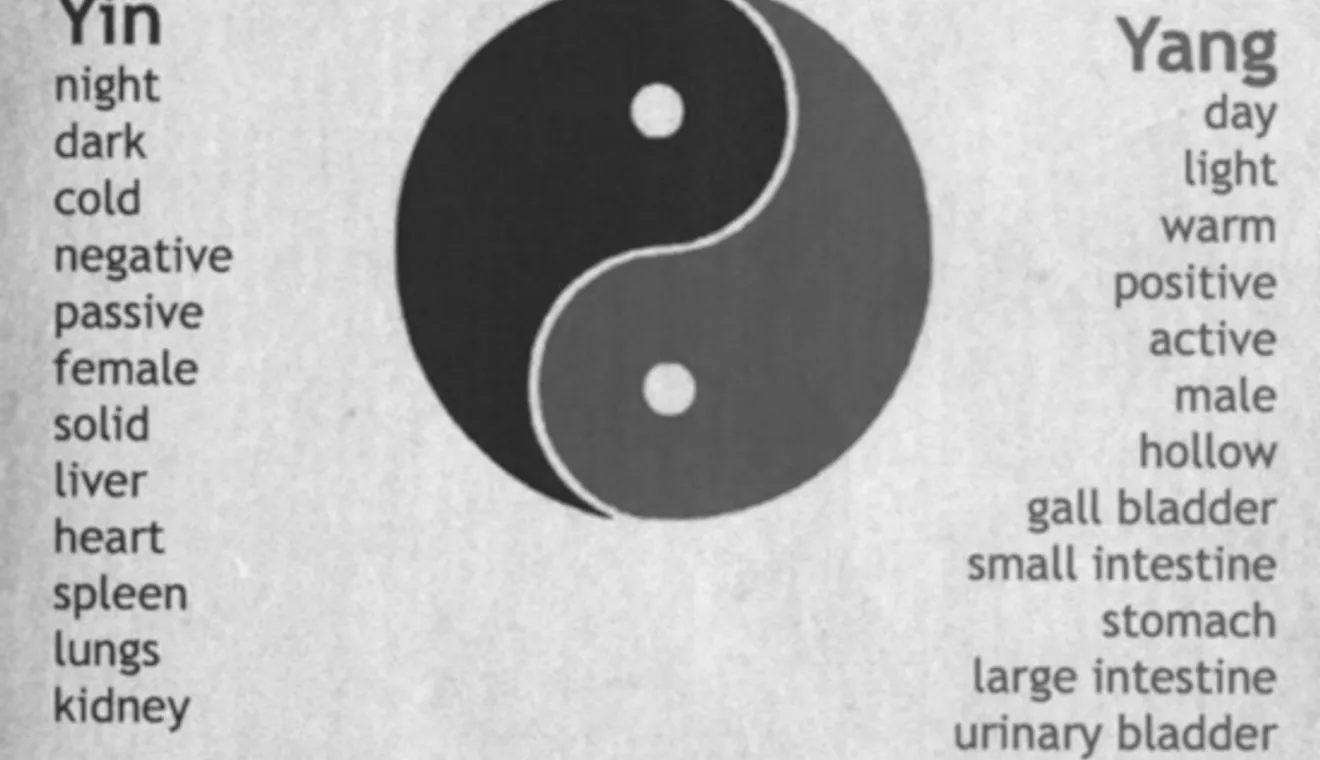
Shiatsu massage is thought to maintain yin and yang harmony.
Because the blockage of such meridian pathways can cause illness, Shiatsu massage uses pressure to open them up.
Much like acupressure, this massage focuses on certain pressure points of the body.
Each pressure point, or “tsubo” in Japanese, correlates to a certain meridian and organs within.
Pressure points can be stimulated through tapping, rubbing, or simply applying pressure using fingers, palms, or thumbs.
These points are the key to obtaining energy balance.
Thai massage is similar to Shiatsu in its usage of acupressure, but the Thai massage pays more attention to compressing muscles and manipulating joint mobility.
Other massaging technique like that of the Swedish tradition has more rhythmic pressure, with longer strokes and lighter kneading of muscles.
What Are the Benefits of Shiatsu Massage?
Shiatsu massage therapy has a wide range of benefits.
These benefits can be condensed into the following:
-
Relieve chronic ailments
-
Help relax and rejuvenate the body
-
Improve coordination
Shiatsu can be productive in relieving symptoms of long-lasting physical conditions.
Immediately after a massage session, blood pressure are heart rate are reduced. Endorphins are increased throughout the body, which give a natural pain-relieving effect.
Shiatsu can assist in treating respiratory issues, digestive issues, chronic fatigue and insomnia, menstrual problems, headaches, and so on.
Its relaxing nature can vastly improve mood, reducing symptoms of psychological disorders like depression, anxiety, and stress.
By targeting certain pressure points, a client’s specific complaint can be treated.
Because the massage directly targets muscles, clients feel an immediate release of tension.
It can help with conditions like arthritis and swollen joints.
The combination of assisted-stretching and acupressure improves coordination.
Range of motion is enhanced. It is a risk-free component of anyone’s holistic health.
Is Shiatsu for everyone?
Although Shiatsu massage therapy can relieve symptoms of many conditions, it is not a cure-all for everything.
A massage is not for serious acute ailments like fever, venereal or infectious diseases, poisoning or bleeding, and other diseases.
Such diseases require immediate medical attention.
Shiatsu massage is better indicated for long-term ailments that are not immediately life-threatening.
Even in the absence of any chronic condition, this massage therapy can be a positive addition to one’s life.
It can be therapeutic for life’s daily stress, sustaining the immune system.
Shiatsu is not just for treating a problem. It is can be a preventative method for health risks down the line.
Otherwise, there are no risks or side effects related to the therapy.
Bottom Line
The acupressure targeting, finger kneading massage therapy of Shiatsu has been a long-standing practice in Japan.
A session of Shiatsu can not only prove relief from stress, but also reduce chronic pain.
The massage’s purpose is to allow the body to heal itself by unblocking meridian channels.
With proper, balanced energy flow, the body can work at its highest potential to naturally reduce negative symptoms.
Even if you don’t believe in the concept of qi, yin and yang, or elements, the massage is effective in relieving muscle tension.
The joint mobility and stretching of muscles involved in Shiatsu provide much benefit to one’s health.
Best of all, the massage lacks any negative effects, so clients don’t have anything to lose when trying out Shiatsu.